Golden Stoneflies were out in force along the Lower Deschutes River when I floated from Warm Springs to Trout Creek last week. Goldens are a very important part of a trout’s diet.
A couple species are lumped under the heading “Golden Stonefly” – the Hesperoperla pacifica and Calineuria californica. Who cares what the scientific names are, we can call them Goldens. They are the “little brother” of the bigger Salmonflies, known as Pteronarcys californica
Some fishermen say when Goldens and Salmonflies are available, fish seem to key on Goldens. Who knows why?
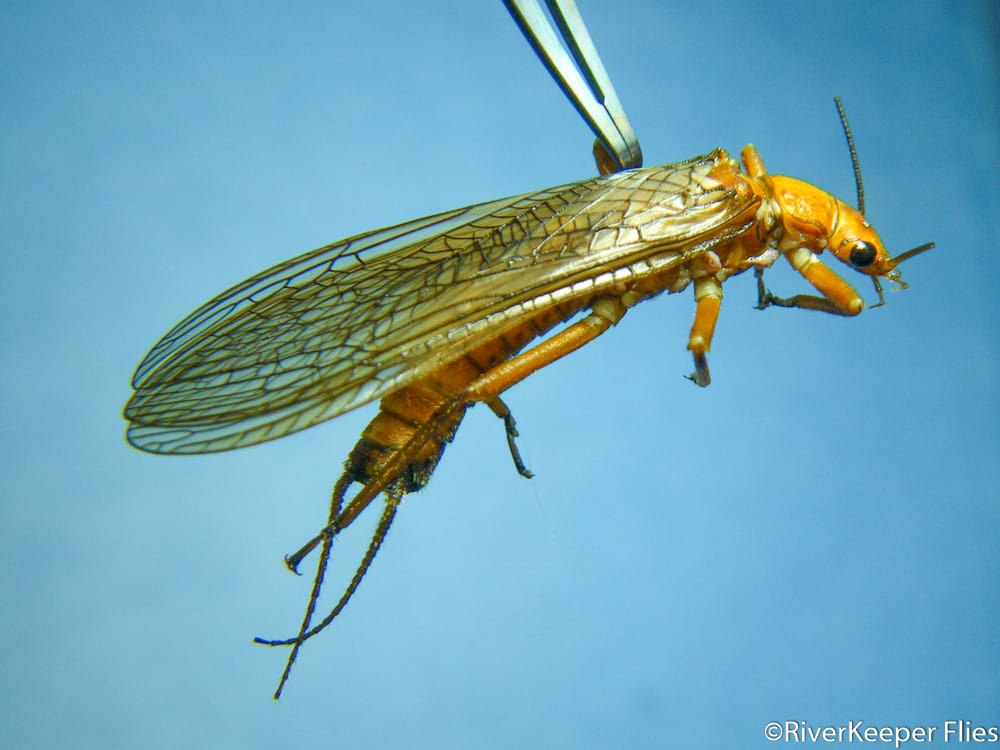
Watch for Goldens hatching in a cold, clean, fast river or stream close to your home. I’ve seen them hatch in mid-May on some rivers and into July on others.
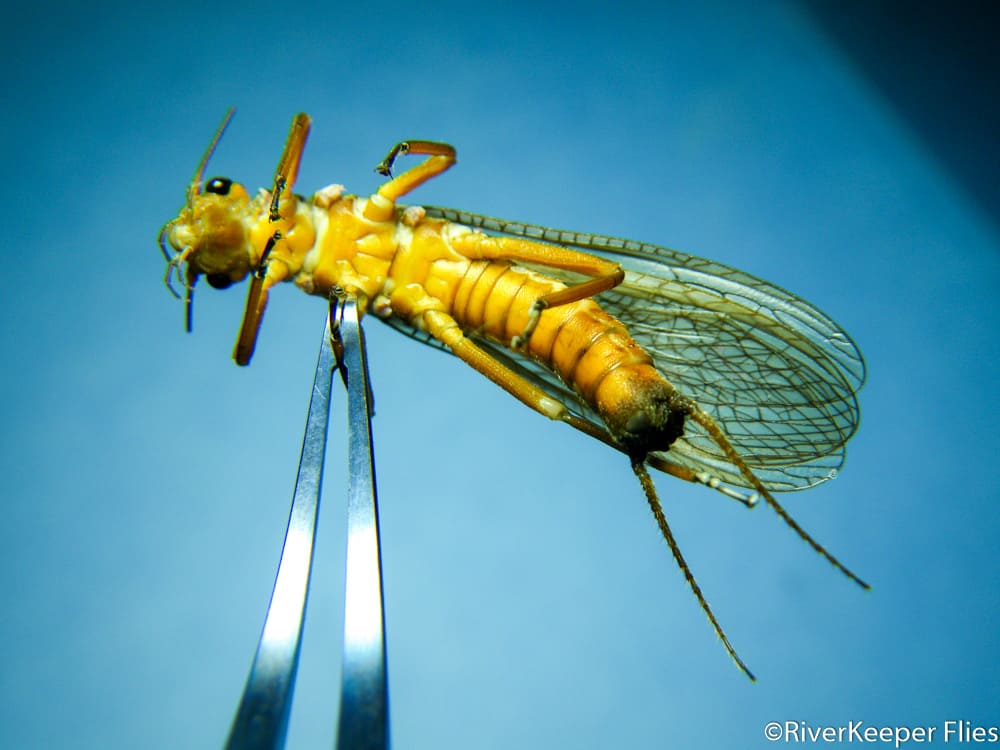
The timing of the hatch is almost immediately after or even during that of the big Salmonflies (check out the big bugs in my Salmonflies post). In fact, there are numerous Golden Stoneflies trying to mate with Salmonflies. Here is a picture of two Salmonflies and one Golden Stonefly (far left) trying to get in on the action.
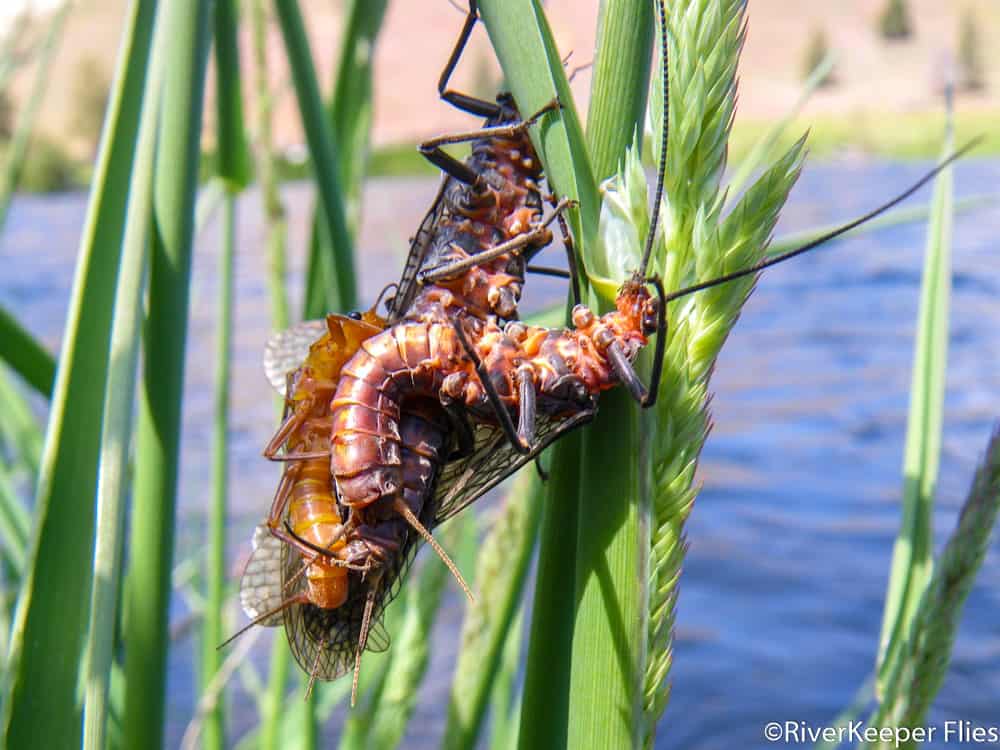
Goldens begin their life-cycle as an egg that drops from the female’s abdomen and sinks to the gravel at the bottom of the stream bed. Shortly after that, it becomes a nymph and walks along the bottom eating algae. The nymph continues to grow by eating not only algae, but is carnivorous. It eats other larvae and nymphs of mayflies, caddis, and midges.
As it grows, it will add length and girth. Depending on the river, two or three years will pass before it crawls to the edge of a river and hatches. Here is an immature nymph, probably a year old.
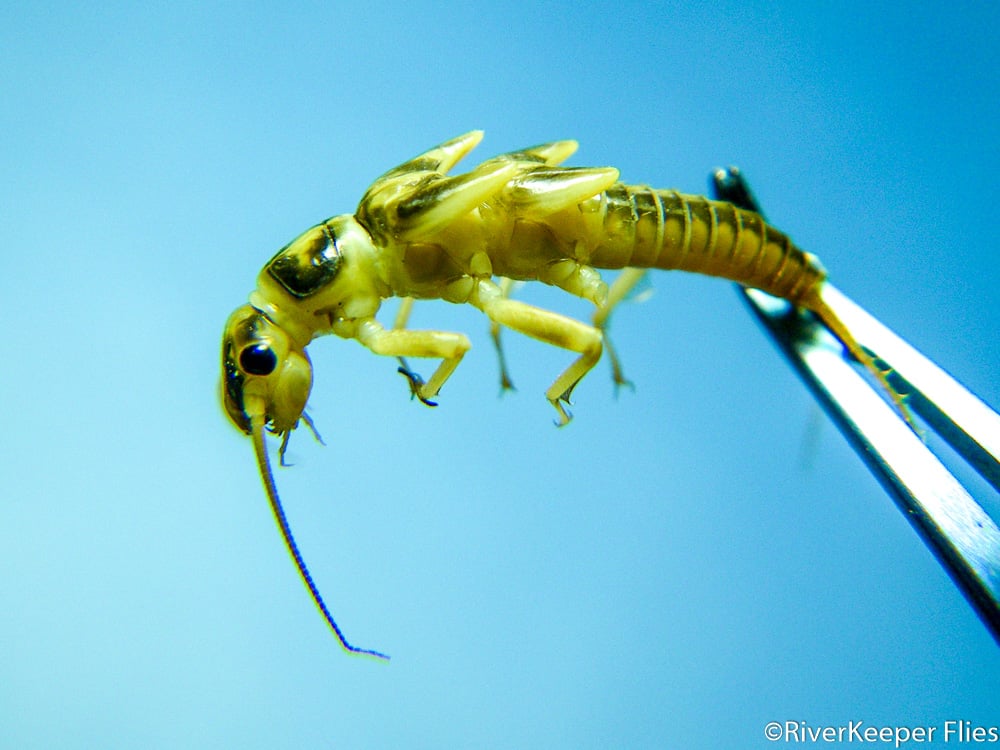
There are several very effective Golden Stonefly patterns you should have in your fly box. The fish have seen every imaginable fly, so having a few choices will increase your chance at success.
Here are a few of my favorite Golden Stoneflies from my fly box:
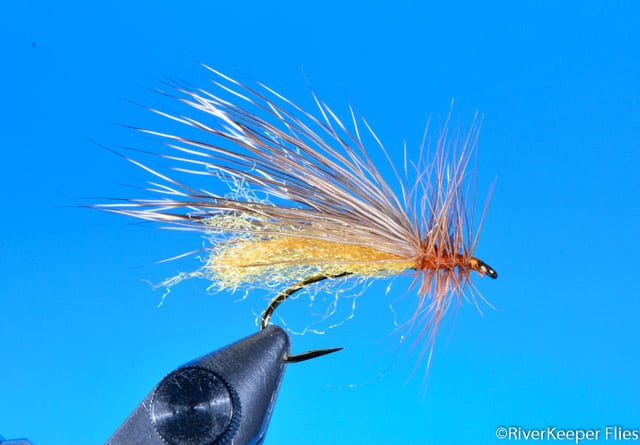

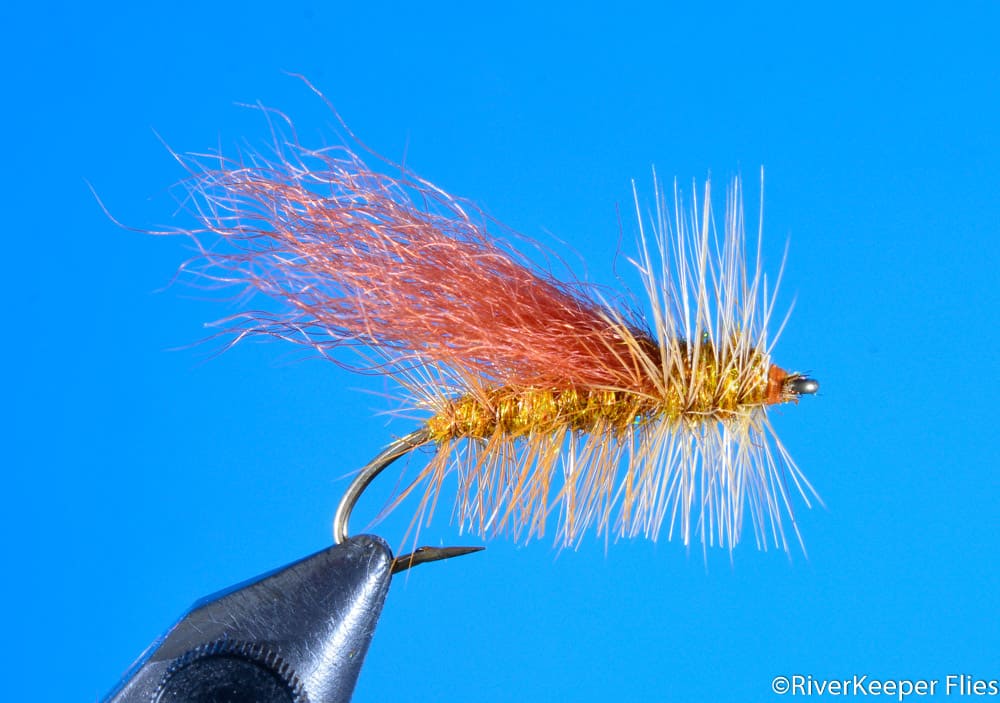
Kaufmann’s Stimulator – Golden Stonefly

McPhail’s Golden Stonefly Nymph – Variant
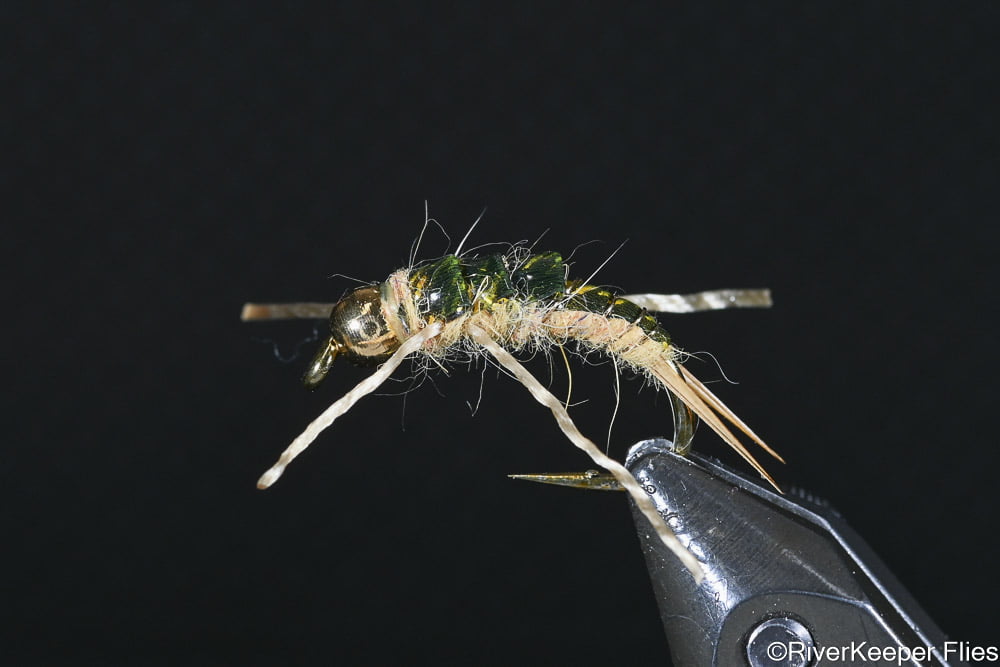
So these are some of my favorite flies…what are yours?
Enjoy…go fish!
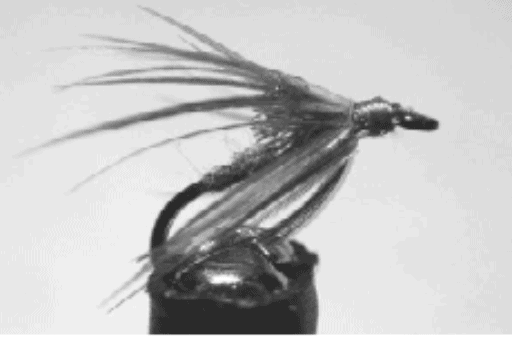





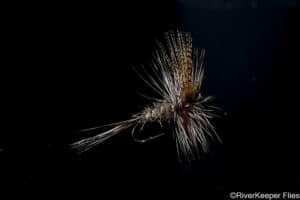
I’m Trying to find a Mecca Golden stone trout fly. Do you have them?
Patrick
Sorry, but I haven’t heard of that fly pattern.
John